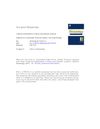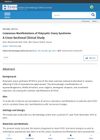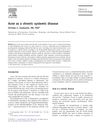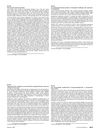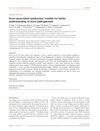Acanthosis Nigricans, Insulin Resistance, And Cutaneous Virilism
May 1988
in “
British Journal of Dermatology
”
acanthosis nigricans insulin resistance hyperandrogenism hirsutism acne vulgaris hidradenitis suppurativa androgenic alopecia keratosis pilaris fasting plasma insulin serum testosterone anti-androgen therapy AN insulin resistance high androgen levels excessive hair growth acne hidradenitis male pattern baldness chicken skin high insulin testosterone anti-androgen treatment
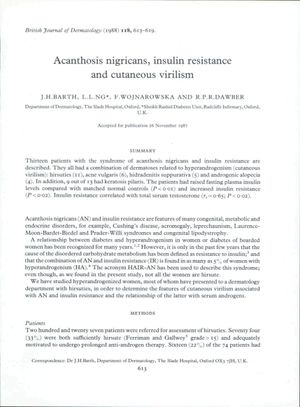
TLDR Patients with acanthosis nigricans often have insulin resistance and signs of increased male hormones, but treatment targeting these male hormones is generally ineffective.
In the 1988 study, 13 patients with acanthosis nigricans (AN) and insulin resistance were examined, all showing signs of hyperandrogenism, including hirsutism in 11 patients, acne vulgaris in 6, hidradenitis suppurativa in 5, and androgenic alopecia in 4. Additionally, 9 had keratosis pilaris. These patients had significantly higher fasting plasma insulin levels and increased insulin resistance compared to normal controls, with a correlation between insulin resistance and total serum testosterone levels (r=0.65; P<0.02). The study indicated a commonality of AN and insulin resistance in various disorders and a link between diabetes and hyperandrogenism in women, noting that not all women with HAIR-AN syndrome are hirsute. Out of a larger group of 227 referred for hirsutism, 74 received anti-androgen therapy. The study underscored a strong relationship between serum testosterone levels and insulin resistance, independent of obesity, but found anti-androgenic treatment for AN generally unsuccessful, leaving the connection between hyperandrogenism, insulin resistance, and AN unclear.

